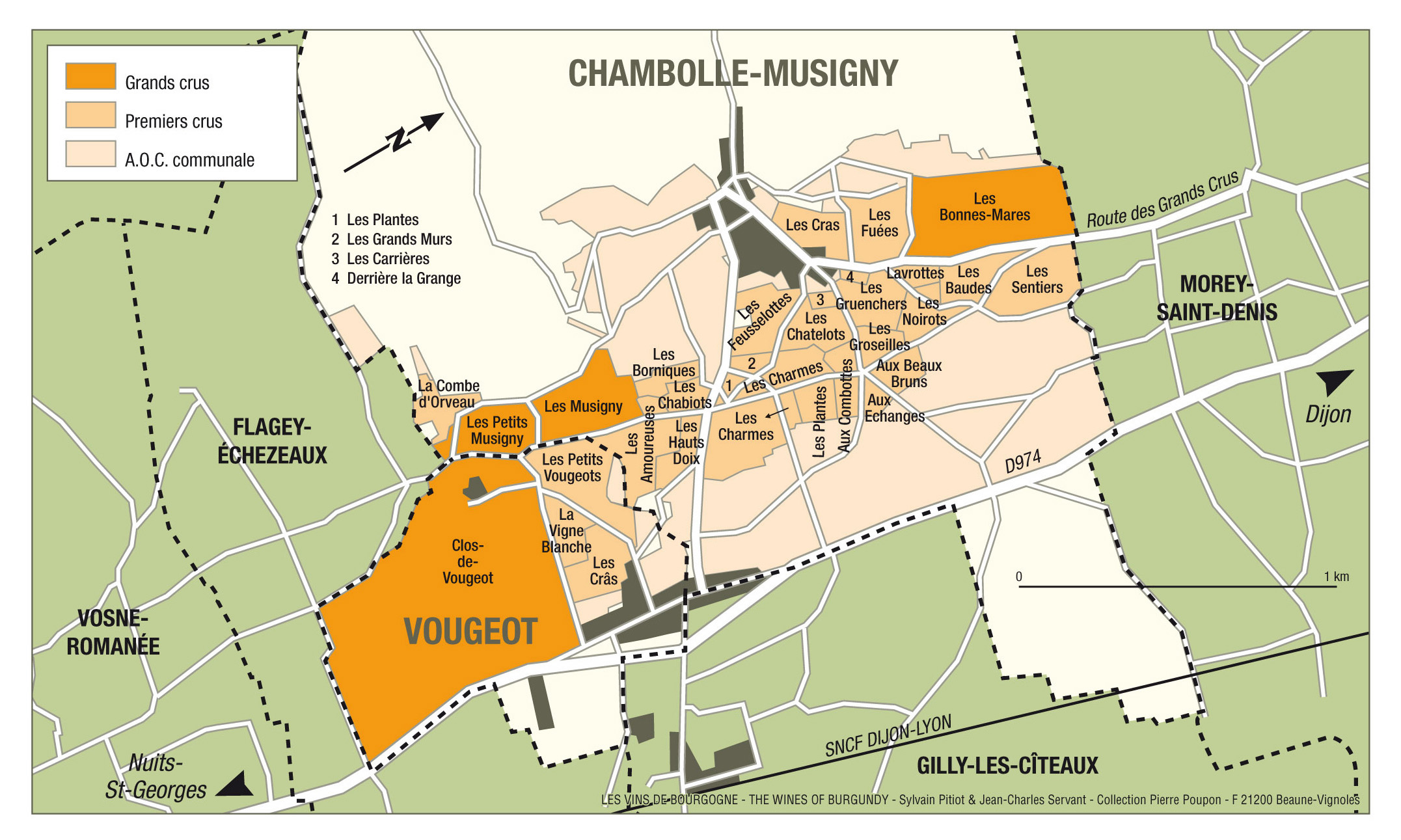Chambolle Musigny
“Ethereal, Graceful, Elegant”
So small as to barely qualify as a village, Chambolle nevertheless enjoys an outsize reputation for its ethereal wines. Only two Grand Crus are here, but they are heavy hitters, Bonnes Mares and Musigny. There’s also a so-called Super Second in Les Amoureuses, a Premier Cru, which many consider a Grand Cru level much of the time. Other strong Premier Crus are Les Fuées, Les Gruenchers, Les Charmes, and La Combe d’Orveau.
The most celebrated aspect of Chambolle Musigny is the style of wine, which is considered to be ethereal, graceful, and the very embodiment of finesse that ushers drinkers to Burgundy. It can show power too, but always in the sheen of elegance, decorated with airy red fruit and the aromas of flowers and stone. Musigny and Bonnes Mares can be tannic and even burly wines in their youth. But after a decade or more, eventually they too can find their way to that heavenly Chambolle music.
How does Chambolle come by its elegant, finely knit wines? Is it the local winemaking style, epitomized by Frédéric Mugnier? Or is it a matter of terroir? On the terroir front, there can be no doubt about a few facts: the village sits higher on the slope than any of the other villages, so it’s reasonable to surmise that its vineyards are slightly cooler and, being higher up, there is more exposed limestone, leading to lighter wines. It also sits in the maw of the large combe de Chambolle-Musigny, which keeps things cooler still.
At the northern end of Bonnes Mares, which borders Morey-St-Denis, there are darker soils mid-slope. These soils, also known as terres rouges (red earth), carry more clay to produce a more muscular, denser wine. In contrast, the southern part of Bonnes Mares consists of terres blanches (white earth), a limestone-rich marl, and makes a much gentler, high-toned wine of greater finesse. Celebrated producer, Christophe Roumier has holdings in both soils and vinifies them alone, before making a blend of the two together.
Also of interest here are the Premier Crus Les Cras and Les Fuées, both on the northern side of Chambolle’s large combe. It’s these vineyards that are often the most elegant, showing lighter tannins and body carrying a pool of delicate red fruits. The grapes are warmed by the sun in a good, south-facing exposure, yet cooled by the funnel of cold air through the combe. Indeed, the air from this combe spills out mostly to the southern end of the village, which is also hemmed in by forest, keeping it, and its elegant crus of Musigny and Les Amoureuses, well chilled.
tasting notes
Chambolle is considered to be the epitome of the light, ethereal expression of Pinot Noir in Burgundy. That’s expressed at its most extreme in the wines of Frédéric Mugnier, who has cool vineyards and extracts his grapes very lightly (not churning them around too much as they ferment in the tank) to produce wines that almost look like dark rosés and may carry the delicate perfume of strawberries and raspberries. However, in less extreme examples, even the more extracted, darker wines of the cru usually have some grace. Take the Musigny of Christophe Roumier. It’s a powerful, often tannic wine, but no one can doubt its suppleness.
grand cru
Bonne Mares, Musigny
Premier cru
Les Amoureuses, Les Charmes, Les Cras, Les Fuées, Les Gruenchers, La Combe d’Orveau
top producers
Christophe Roumier, winemaker
domaine george roumier
Few are more respected in Burgundy than Christophe Roumier, who embodies the Burgundian spirit more than most. His domaine is tiny, and he produces very little wine. But what he does make is of the utmost quality and from the greatest crus, like both Bonnes Mares and Musigny. The wines are sturdy, strong, and made to age.
Frédéric Mugnier, winemaker
domaine jacques-frédéric Mugnier
Frédéric Mugnier, a former oil engineer and then airline pilot, is meticulous to the extreme. In making very light-colored wines of low extraction, as described above, he comes across as a certain type of artist, dedicated wholly to his craft and vision for his wines. Lucky for all of us, that vision is brilliant and his singular wines are always a blessing. These wines have less power and density than Roumier’s, but that’s the point, as they never feel thin or fail to beguile.
Francois Millet, winemaker
domaine comte georges de vogue
Unlike many estates in Burgundy, de Vogüé has ancient viticultural origins, tracing its beginnings to the 15th century with ownership passing through 20 generations to the present proprietors. In 1925 it was inherited by Comte Georges de Vogüé, and has now passed it on to his granddaughters, Claire de Causans and Marie de Ladoucette. The estate went through a bad patch from the 1960s until the mid-1980s, under an estate manager, who allowed quality to slide. Then, in 1986, François Millet was hired as technical director, and Eric Bourgogne joined soon after as vineyard manager - the turnaround was swift and the wines have steadily climbed to regain its aristocratic status.
detailed map
Source: Rajat Parr, The sommelier’s atlas of taste (2018); https://www.bougogne-wines.com



